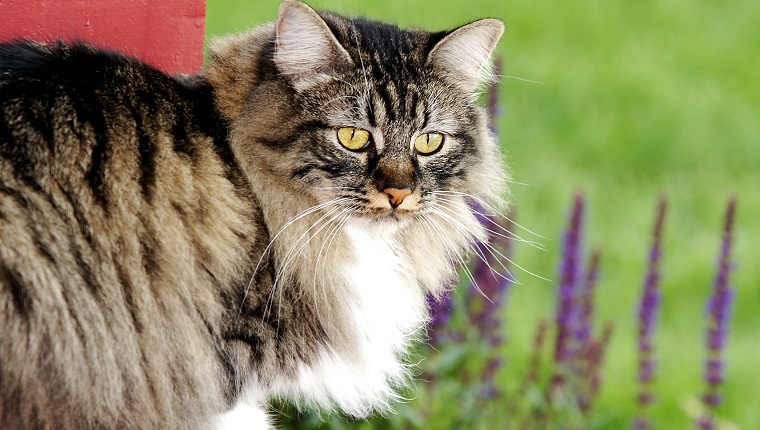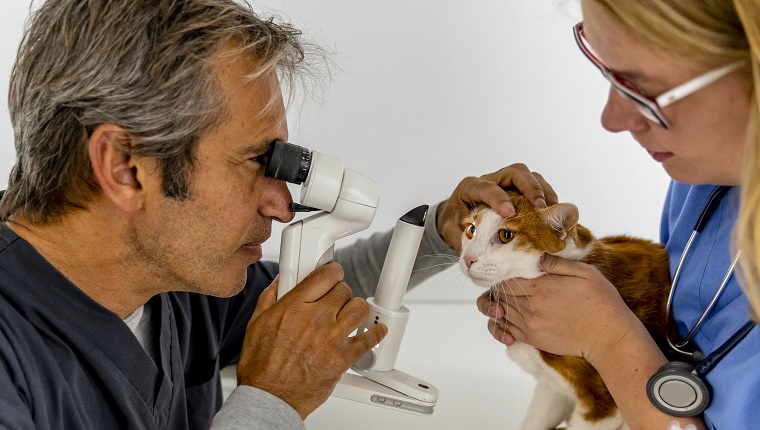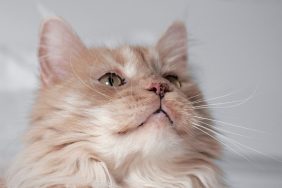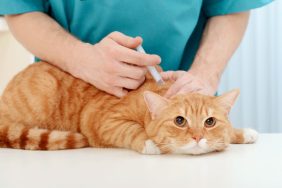Corneal dystrophy in cats is an inherited medical condition that usually affects both of a kitty’s eyes. When a cat suffers from this condition, white and gray lesions can appear on the eyes and eventually lead to vision issues and blindness.
The disease seems to affect certain cat breeds more than others, including the Manx and Domestic Shorthair.
If you see signs that your kitty is developing eye issues, then you must consult your veterinarian for a proper diagnosis and advice. Here’s what you should know about the symptoms, causes, and treatments of corneal dystrophy in cats.
Symptoms Of Corneal Dystrophy In Cats
Corneal dystrophy in cats can produce different symptoms depending on which precise category of the condition a cat is affected by.
In general, the most common symptoms include:
- Cloudy looking eyes
- Swelling around the cornea
- Ulcers and blisters on the cornea
- Loss of vision
Causes Of Corneal Dystrophy In Cats

Corneal dystrophy in cats is inherited. Issues with the way a cat’s body metabolizes fat can be a contributory factor towards developing the condition.
In general, the Domestic Shorthair and Manx breeds of cat seem to have the highest risk for developing this issue.
Veterinary Treatments
If you think that your cat is developing corneal dystrophy, your veterinarian will want to carry out a full physical examination. They’ll pay special attention to examining the eyes.
Monitoring the interocular pressure of the eyes and using a substance called fluorescein dye can help identify issues with the cornea. They vet will also likely take blood work when investigating a potential case.
When it comes to treatment, there is no specific cure for the condition. However, your vet may suggest different courses of treatment to address the condition.
In some cases, a surgery might be appropriate for your cat. Your vet may also try contact lenses in a bid to help your cat manage their symptoms.
In cases that involve ulcers, vets frequently prescribe antibiotic eye medication. As ever, if your vet prescribes your cat any medicine, it is vital that you stick to the specific frequency and dosage instructions and complete the full course of medication.
Has your cat developed corneal dystrophy? How are you keeping the condition under control? Tell us all about it in the comments below.









